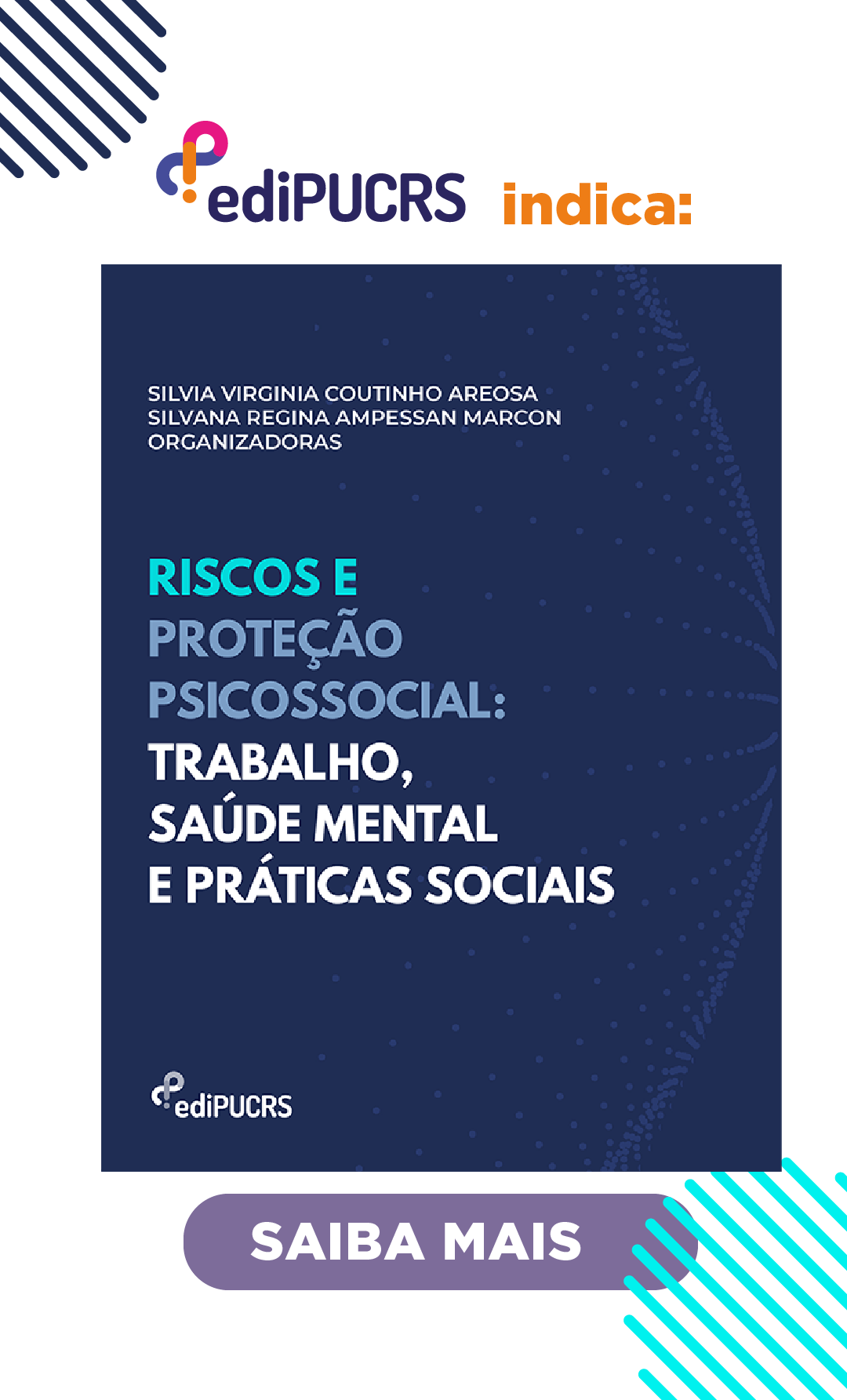Oxitocina y bienestar como promotores de la regulación del afecto y de la homeostasis: una revisión neurocientífica
DOI:
https://doi.org/10.15448/1980-8623.2020.2.30291Palabras clave:
Oxitocina; Bienestar; Neurociencia Traslacional.Resumen
Contexto: El termo “Bienestar” [WB] abarca muchos significados diferentes en la literatura científica. Objetivos: buscar situaciones y semánticas sobre sentimientos de bienestar [WB] asociados con la produccion de oxitocina [OT]. Fuentes de datos: Revisión sistemática en PubMed, BVS Virtual (Medline,
Lilacs) y SIBI-USP Portal de Busca Integrada (1970-1999; 2014-2018). Selección de estudios: revisiones y ensayos clínicos (PICOS) en OT, & WB y sinónimos, en humanos. Extracción de datos: Extracion independiente de artículos por dos revisores; selección de artículos por un revisor, utilizando criterios predefinidos. Síntesis de datos: se seleccionaron 46 artículos dentre 339, y mas 26 adicionales. Los datos principales se referían a situaciones sociales, estímulos sensoriales, confianza y estudios psiquiátricos y de salud. Conclusiones: Las variables identificadas involucraron interacciones cerebro-cuerpo-mente y salud; La neurociencia traslacional parece ser el mejor marco teórico para investigarlo.
Descargas
Citas
Adelman, G. (2010). The Neurosciences Research Program at MIT and the beginning of the modern field of neurosciences. Journal of the History of Neurosciences: Basic and Clinical Perspectives, 19(1):15-23. https://doi.org/10.1080/09647040902720651
Azarsa T., Davoodi A., Markani A. K., Gahramanian A & Vargaeei A. (2015). Spiritual wellbeing, attitude toward spiritual care and its relationship with spiritual care competence among critical care nurses. Journal of Caring Science, 4(4):309–320. https://doi.org/10.15171/jcs. 2015.031
Behnia B., Heinrichs M., Bergmann W., Jung S., Germann J., Schedlowski M, … Kruger T. H. (2014). Differential effects of intranasal oxytocin on sexual experiences and partner interactions in couples. Hormonal Behavior, 65(3):308-318. https://doi.org/10.1016/j.yhbeh.2014.01.009
Burgdorf C., Rinn C. & Stemmler G. (2016). Effects of personality on the opioidergic modulation of the emotion warmth-liking. Journal of Comparative Neurology, 524(8):1712-26. https://doi.org/10.1002/cne.23847
Campos E. M. P. & Rodrigues A. L. (2005). Mechanism of symptoms’ formation in psychosomatics. Mudanças-Psicol Saúde, 13(2):290-308. https://www.metodista.br/revistas/revistas-ims/index.php/MUD/article/.../826/841 DOI nonexistent.
Carter C. S. (2014). Oxytocin pathways and the evolution of human behavior. Annual Review of Psychology, 65:10.1–10.23. https://doi.org/10.1146/annurev-psych-010213-115110
Carter C. S. (1998). Neuroendocrine perspectives on social attachment and love. In: K. Uvnas-Moberg & C. S. Carter (Guest Eds). Is there a neurobiology of love? Psychoneuroendocrinology, 23(8):779-818.
https://doi.org/10.1146/annurev-psych-010213-115110
C. S. Carter, I. I. Lederhendler & B. Kirkpatrick (Eds.). (1997). The integrative neurobiology of affiliation. Annals of the New York Academy of Sciences, 807. https://doi.org/10.1016/B978-012532104-4/50006-8
Case L. K., Laubacher C. M., Olausson H., Wang B., Spagnolo, C. & Bushnel M. C. (2016). Encoding of touch intensity but not pleasantness in human primary somatosensory cortex. The Journal of Neuroscience, 36(21):5850–5860. https://doi.org/10.1523/JNEUROSCI.1130-15.2016
Charlet A. & Grinevich V. (2017). Oxytocin mobilizes midbrain dopamine toward sociality. Neuron, 95(2)235-237. https://doi.org/10.1016/j.neuron.2017.07.002
Colver M. C. & El-Alayli A. (2015). Getting aesthetic chills from music: the connection between openness to experience and frisson. Psychology of Music, 44(3):413-427. https://doi.org/10.1177/0305735615572358
Cummins R.A. (2016) The Theory of Subjective Wellbeing Homeostasis: a contribution to understanding life quality. In: Maggino F. (Eds.). A life devoted to quality of life. Social indicators research series, 60. Cham, Switzerland: Springer. https://doi.org/10.1007/978-3-319-20568-7_4
DeCS - Descritores em Ciências da Saúde. decs.bvs.br/
Ditzen B., Nater U. M., Schaer M., La Marca R., Bodenmann G., Ehlert U. & Heinrichs M. (2013). Sex-specific effects of intranasal oxytocin on autonomic nervous system and emotional responses to couple conflict. Social Cognitive and Affective Neuroscience, 8(8):897-902. https://doi.org/10.1093/scan/nss083
Ebner N. C., Maura G. M., Macdonald K., Westberg L. & Fischer H. (2013). Oxytocin and socioemotional aging: current knowledge and future trends. Frontiers of Human Neuroscience, 7:487. https://doi.org/10.3389/fnhum.2013.00487
Elabd C., Cousin, W., Upadhyayula P., Chen, R. Y., Chooljian M. S; Li J.,… Conboy, I. M. (2014). Oxytocin is an age-specific circulating hormone that is necessary for muscle maintenance and regeneration. Nature Communications, 10:5:4082. https://doi.org/10.1038/ncomms5082
Ellingsen D. -M., Wessberg J., Chelnokova O., Olausson H., Laeng B. & Leknes S. (2014). In touch with your emotions: oxytocin and touch change social impressions while others' facial expressions can alter touch. Psychoneuroendocrinology, 39:11-20. https://doi.org/10.1016/j.psyneuen.2013.09.017
Emeny R. T., Huber D., Bidlingmaier M., Reincke M., Klug G. & Ladwig K. H. (2015). Oxytocin-induced coping with stressful life events in old age depends on attachment: findings from the cross-sectional KORA Age study. Psychoneuroendocrinology, 56:132-42. https://doi.org/10.1016/j.psyneuen.2015.03.014
Estévez-López F., Gray C. M., Segura-Jiménez V., Soriano-Maldonado A. Álvarez-Gallardo I. C., Arrayás-Grajera M. J., ... Pulido-Martos M. (2015). Independent and combined association of overall physical fitness and subjective well-being with fibromyalgia severity: the al-Ádalus Project. Quality of Life Research, 24(8):1865-1873.
https://doi.org/10.1007/s11136-015-0917-7
Fancourt D., Williamon A., Carvalho L. A., Steptoe A., Dow R. & Lewis I. (2016). Singing modulates mood, stress, cortisol, cytokine and neuropeptide activity in cancer patients and carers. Ecancermedicalscience,10:631. https://doi.org/10.3332/ecancer.2016.631
Feldman R., Rosenthal Z. & Edelman A. I. (2014). Maternal preterm skin-to-skin contact enhances child physiologic organization and cognitive control across the first 10 years of life. Biological Psychiatry, 75(1):56-64. https://doi.org/10.1016/j.biopsych.2013.08.012
Field T. (2016). Moderate pressure massage therapy. In: H. Olausson, J. Wessberg, I. Morrison & F. McGlone. (Eds). Affective touch and neurophysiology of CT afferents. N. York: Springer. https://doi.org/10.1007/978-1-4939-6418-5_22
Fischer-Shofty M., Brüne M., Ebert A., Shefet D., Levkovitz Y. & Shamay-Tsoory S. G. (2013). Improving social perception in schizophrenia: the role of oxytocin. Schizophrenia Research, 146(1-3):357-62. https://doi.org/10.1016/j.schres.2013.01.006
Gentsch A., Panagiotopoulou E. & Fotopoulou A. (2015). Active interpersonal touch gives rise to the social softness illusion. Cell Press, 25(18): 2392-2397. https://doi.org/10.1016/j.cub.2015.07.049
Gorgen S. M., Joormann J., Hiller W. & Witthoft M. (2015). The role of mental imagery in depression: negative mental imagery induces strong implicit and explicit affect in depression. Frontiers of Psychiatry. https://doi.org/10.3389/fp-syt.2015.00094
Grape C., Sandgren M., Hansson L. O., Ericson M. & Theorell T. (2003). Does singing promote well-being?: an empirical study of professional and amateur singers during a singing lesson. Integrative Physiological and Behavioral Science, 38(1):65-74. DOI: 10.1007/BF02734261. https://doi.org/10.1007/BF02734261
Gupta U. & Gupta B. S. (2015). Psychophysiological reactions to music in male coronary patients and healthy controls. Psychology of music, 43(5):736-755. https://doi.org/10.1177/0305735614536754
Harari-Dahan O. & Bernstein A. (2014). A general approach-avoidance hypothesis of oxytocin: accounting for social and non-social effects of oxytocin. Neuroscience Biobehavioral Review,47:506-519. https://doi.org/10.1016/j.neubiorev.2014.10.007 http://www.apa.org/research/action/glossary.aspx?tab=16/Home//Psychological Science//Research in Home//Psychological Science / / Research in Action// Glossary of Psychological Terms. http://www.kerstinuvnasmoberg.com/ http://www.who.int/features/factfiles/mental_health/en/
Hurlemann R. (2017). How the brain codes intimacy: the neurobiological substrates of romantic touch. Human Brain Mapping, 38(9):4525-4534. https://doi.org/10.1038/nature03701
Jezova D., Hlavacova N., Makatsori A., Duncko R., Loder I. & Hinghofer-Szalkay H. (2013). Increased anxiety induced by listening to unpleasant music during stress exposure is associated with reduced blood pressure and ACTH responses in healthy men. Neuroendocrinology, 98(2):144-150. https://doi.org/10.1159/000354202
Jiang B., Chang C. -Y. & Sullivan W.C. (2014). A dose of nature: tree cover, stress reduction, and gender differences. Landscape and Urban Planning, 132:26-36. https://doi.org/10.1016/j.landurbplan.2014.08.005.
K. Uvnas-Moberg & C. S. Carter (1998) (Guest Eds.). Is there a neurobiology of love? Psychoneuroendocrinology, 23(8). https://doi.org/10.1016/S0306-4530(98)00055-9
Kinderman P., Tai S., Pontin E., Schwannauer M., Jarman I. & Lisboa P. (2015). Causal and mediating factors for anxiety, depression and well-being. Brazilian Journal of Psychiatry, 206(6):456-460. https://doi.org/10.1192/bjp.bp.114.147553
Kirsch P. (2015). Oxytocin in the socioemotional brain: implications for psychiatric disorders. Dialogues in Clinical Neuroscience, 17(4):463-476. https://doi.org/10.1159/000354202
Kojima S. & Alberts J. R. (2011). Oxytocin mediates the acquisition of filial, odor-guided huddling for maternally-associated odor in preweanling rats. Hormonal Behavior, 60(5):549-558. https://doi.org/10.1016/j.yhbeh.2011.08.003
Konrath S., Falk E., Fuhrel-Forbis A., Liu M., Swain J., Tolman R., … Walton M. (2015). Can text messages increase empathy and prosocial behavior? the development and initial validation of text to connect. PLoS ONE. https://doi.org/10.1371/journal.pone.0137585
Kosfeld M., Heinrichs M., Zak P. J., Fischbacher U. & Fehr E. (2005). Oxytocin increases trust in humans. Nature, 435(7042):673-676. https://doi.org/10.1038/nature03701
Kreuder A. K., Scheele D., Wassermann L., Wollseifer M., Stoffel-Wagner B., Lee M. R., … Hurlemann R. (2017). How the brain codes intimacy: the neurobiological substrates of romantic touch. Human Brain Mapping, 38(9):4525-4534. https://doi.org/10.1038/nature03701
Liberzon, I., Trujillo K. A., Akil H. & Young E. A. (1997). Motivational properties of oxytocin in the conditioned place preference paradigm. Neuropsychopharmacology, 17(6):353-359. https://doi.org/10.1016/S0893-133X(97)00070-5
Litchfield P., Cooper C., Hancock C. & Watt P. (2016). Work and wellbeing in the 21st century. International Journal of Environmental Research and Public Health, 13(11):1065. https://doi.org/10.3390/ijerph13111065
Littlefield M. M. & Johnson, J. M. (2012). The neuroscientific turn: transdisciplinarity in the Age of the Brain. Ann Arbor: The University of Michigan Press. https://doi.org/10.3998/mpub.4585194
MacDonald, K. & Feifel, D. (2015). Helping oxytocin deliver: considerations in the development of oxytocin-based therapeutics for brain disorders. In: I. Shalev & R. P. Ebstein (Eds.). Social hormones and human behavior: what do we know and where do we go from here. Frontiers in Neuroscience, 7(35):42-62. https://doi.org/10.3389/fnins.2013.00035
Magon, N. & Kalra, S. (2011). The orgasmic history of oxytocin: love, lust, and labor. Indian Journal of Endocrinology and Metabolism, 15(3): S156–S161. https://doi.org/10.4103/2230-8210.84851
Marsh A. A. (2016). Neural, cognitive, and evolutionary foundations of human altruism. Wiley Interdisciplinary Review of Cognitive Science, 7(1):59-71. https://doi.org/10.1002/wcs.1377
McGlone F., Wessberg J. & Olausson H. (2014). Discriminative and affective touch: sensing and feeling. Neuron, 82(4):737-55. DOI: 10.1016/j.neuron.2014.05.001 https://doi.org/10.1016/j.neuron.2014.05.001
McCullough M. E., Churchland P. S. & Mendez A. J. (2013). Problems with measuring peripheral oxytocin: can the data on oxytocin and human behavior be trusted? Neuroscience and Biobehavioral Reviews, 37:1485– 1492. https://doi.org/10.1016/j.neubiorev.2013.04.018
Mellor, L. (2013). An investigation of singing, health and well-being as a group process. British Journal of Music Education, 30(2):177-205. https://doi.org/10.1017/S0265051712000563
Nave G., Camerer C. & McCullough M. (2015). Does oxytocin increase trust in humans? a critical review of research. Perspectives on Psychological Science, 10(6):772-89. https://doi.org/10.1177/1745691615600138
Nelson E. E. & Panksepp J. (1998). Brain substrates of infant-mother attachment: contributions of opioids, oxytocin, and norepinephrine. (1998). Neuroscience & Biobehavioral Reviews, 22(3):437-52.
https://doi.org/10.1016/S0149-7634(97)00052-3
Neumann I. D. & Slattery D. A. (2016). Oxytocin in general anxiety and social fear: a translational approach. Biological Psychiatry, 79(3):213-221. https://doi.org/10.1016/j.biopsych.2015.06.004
Neumann I. D., Krömer S. A., Toschi N. & Ebner K. (2000). Brain oxytocin inhibits the (re) activity of the hypothalamo–pituitary–adrenal axis in male rats: involvement of hypothalamic and limbic brain regions. Regulatory Peptides, 96:31–38.https://doi.org/10.1016/S0167-0115(00)00197-X
Nummenmaa L., Tuominen L., Dunbar R., Hirvonen J., Manninen S., Arponen E., … Sams M. (2016). Social touch modulates endogenous μ-opioid system activity in humans. Neuroimage, 138:242-247. https://doi.org/10.1016/j.neuroimage.2016.05.063
Olff M., Frijling J. L., Kubzansky L. D., Bradley B., Ellenbogen M. A., Bartz J. A…van Zuiden M. (2013). The role of oxytocin in social bonding, stress regulation and mental health: an update on the moderating effects of context and interindividual differences. Psychoneuroendocrinology, 38(9):1883-1894.
https://doi.org/10.1016/j.psyneuen.2013.06.019
Pitman R. K., Orr S. P., Forgue D. F., de Jong J. B. & Claiborn J. M. (1987). Psychophysiologic assessment of posttraumatic stress disorder imagery in Vietnam combat veterans. Archives of General Psychiatry, 44(11):970-975. https://doi.org/10.1001/archpsyc.1987.01800230050009
Panksepp J. (1998). Affective Neuroscience: the foundations of human and animal emotions. 1rst ed. N. York: Oxford University Press. ISBN-10:019517805X ISBN-13: 9780195178050. DOI nonexistent.
Panksepp J., Lane R. D., Solms M. & Smith R. (2016). Reconciling cognitive and affective neuroscience perspectives on the brain basis of emotional experience. Neuroscience and Biobehavioral Reviews, 76(PtB):187-215. https://doi.org/10.1016/j.neubiorev.2016.09.010
Parkinson L., Sibbritt D., Bolton P., van Rotterdam J. & Villadsen I. (2013). Well-being outcomes of chiropractic intervention for lower back pain: a systematic preview. Clinical Rheumatolology, 32(2):167-180. https://doi.org/10.1007/s10067-012-2116-z
Pedersen, C. A., Caldwell, J. D., Jirikowski, G. F., & Insel, T. R. (Eds.). (1992). Oxytocin in maternal, sexual, and social behaviours. Annals of the New York Academy of Sciences: Vol. 652. New York: New York Academy of Sciences. DOI nonexistent.
Porges S. W. (2011). The polyvagal theory: neurophysiological foundations of emotions, attachment, communication self-regulation. N. York: W.W. Norton & Co. ISBN 978-0-393-70700-7. DOI nonexistent.
Quattrocki E. & Friston K. (2014). Autism, oxytocin and interoception. Neuroscience Biobehavioral Review. 47:410-430. https://doi.org/10.1016/j.neubiorev.2014.09.012
Rilling J. K. (2013). The neural and hormonal bases of human parental care. Neuropsychologia, 51(4):731-47.
https://doi.org/10.1016/j.neuropsychologia.2012.12.017
Sack M., Spieler D., Wizelman L., Epple G., Stich J., Zaba M. & Schmidt U. (2017). Intranasal oxytocin reduces provoked symptoms in female patients with posttraumatic stress disorder despite exerting sympathomimetic and positive chronotropic effects in a randomized controlled trial. BMC Medicine, 15(1):40. https://doi.org/10.1186/s12916-017-801-0
Salvador-Carulla L., Lucas R., Ayuso-Mateos J. L. & Miret M. (2014). Use of the terms "Wellbeing" and "Quality of Life" in health sciences: A conceptual framework. European Journal of Psychiatry, 28(1):50-65.
https://doi.org/10.4321/S0213-61632014000100005
Scheele D., Kendrick K. M., Khouri C., Kretzer E., Schläpfer T. E., Stoffel-Wagner B., … Hurlemann R. (2014). An oxytocin-induced facilitation of neural and emotional responses to social touch correlates inversely with autism traits. Neuropsychopharmacology, 39(9):2078-85. https://doi.org/10.1038/npp.2014.78
Schladt T. M., Nordmann G. C., Emilius R., Kudielka B. M., de Jong T. R. & Neumann I. D. (2017). Choir versus solo singing: effects on mood, and salivary oxytocin and cortisol concentrations. Frontiers of Human Neuroscience, 11: 430. https://doi.org/10.3389/fnhum.2017.00430
Schore, A. N. (2015). Affect regulation and the origin of the self: the neurobiology of emotional development. N York: Routledge. ISBN 9781315680019. DOI nonexistent.
Speer M. E. & Delgado M. R. (2017). Reminiscing about positive memories buffers acute stress responses. Nature Human Behaviour, 1:0093. https://doi.org/10.1038/s41562-017-0093
Stemmler G., October, 29th, 2017. E-correspondence.
Swain J. E., Kim P., Spicer J., Ho S. S., Dayton C. J., Elmadih A. & Abel K. M. (2014). Approaching the biology of human parental attachment: brain imaging, oxytocin and coordinated assessments of mothers and fathers. Brain Research, 1580:78-101. https://doi.org/10.1016/j.brainres.2014.03.007
Turkeltaub P. C., Yearwood E. L. & Friedmann E. (2014). Effect of a brief seated massage on nursing student attitudes toward touch for comfort care. The Journal of Alternative and Complementary Medicine, 20(10):792–799. https://doi.org/10.1089/acm.2014.0142
Uvnas-Moberg, K. & Petersson, M. (2005). [Oxytocin, a mediator of anti-stress, well-being, social interaction, growth and healing]. [Article in German]. Z Psychosom Med Psychother. 51(1):57-80. PMID 15834840. Indexed for MEDLINE. PMID:15834840. DOI nonexistent.
Uvnas-Moberg K. (1998). Oxytocin may mediate the benefits of positive social interaction and emotions. In: K. Uvnas-Moberg & C. S. Carter (Guest Eds.). Is there a neurobiology of love? Psychoneuroendocrinology, 23(8):819-835. https://doi.org/10.1016/S0306-4530(98)00056-0
Vallbo, A.B., Olausson, H. & Wessberg J. (1990). Unmyelinated afferents constitute a second system coding tactile stimuli of the human hairy skin. Journal of Neurophysiology, 81:2753-2763.https://doi.org/10.1152/jn.1999.81.6.2753
Walker S. C. & McGlone F. P. (2013). The social brain: neurobiological basis of affiliative behaviours and psychological well-being. Neuropeptides, 47(6):379-393. https://doi.org/10.1016/j.npep.2013.10.008
Wudarczyk O. A., Earp B. D., Guastella A. & Savulescu J. (2013). Could intranasal oxytocin be used to enhance relationships? research imperatives, clinical policy, and ethical considerations. Current Opinion in Psychiatry, 6(5):474-484. https://doi.org/10.1097/YCO.0b013e3283642e10





